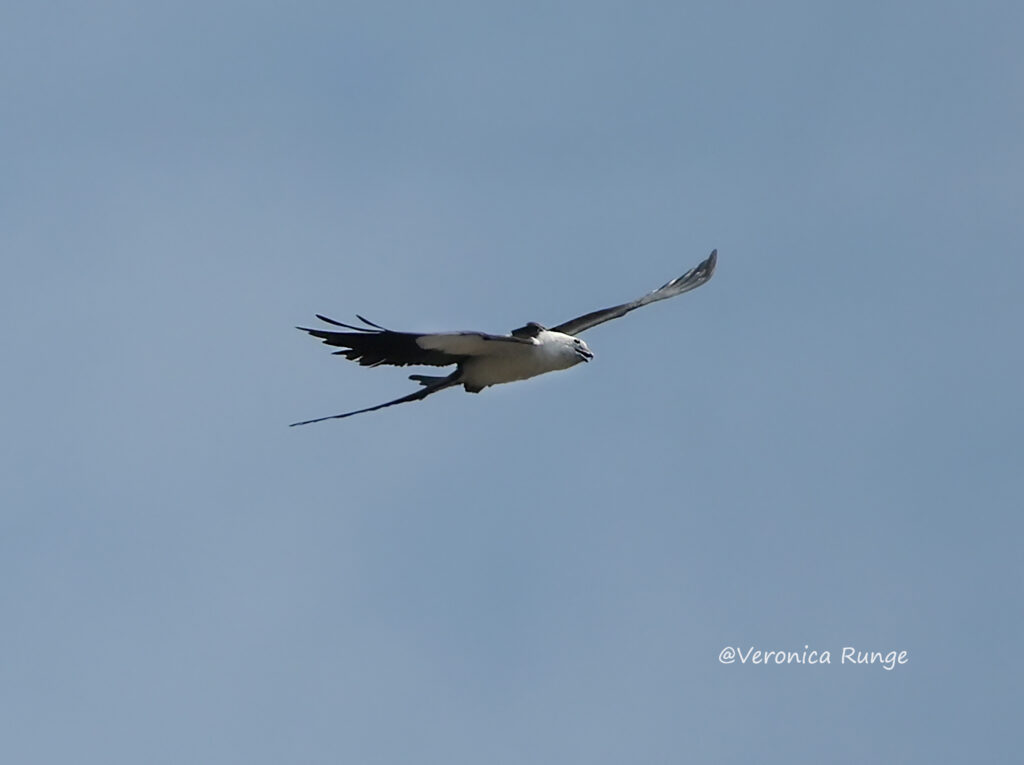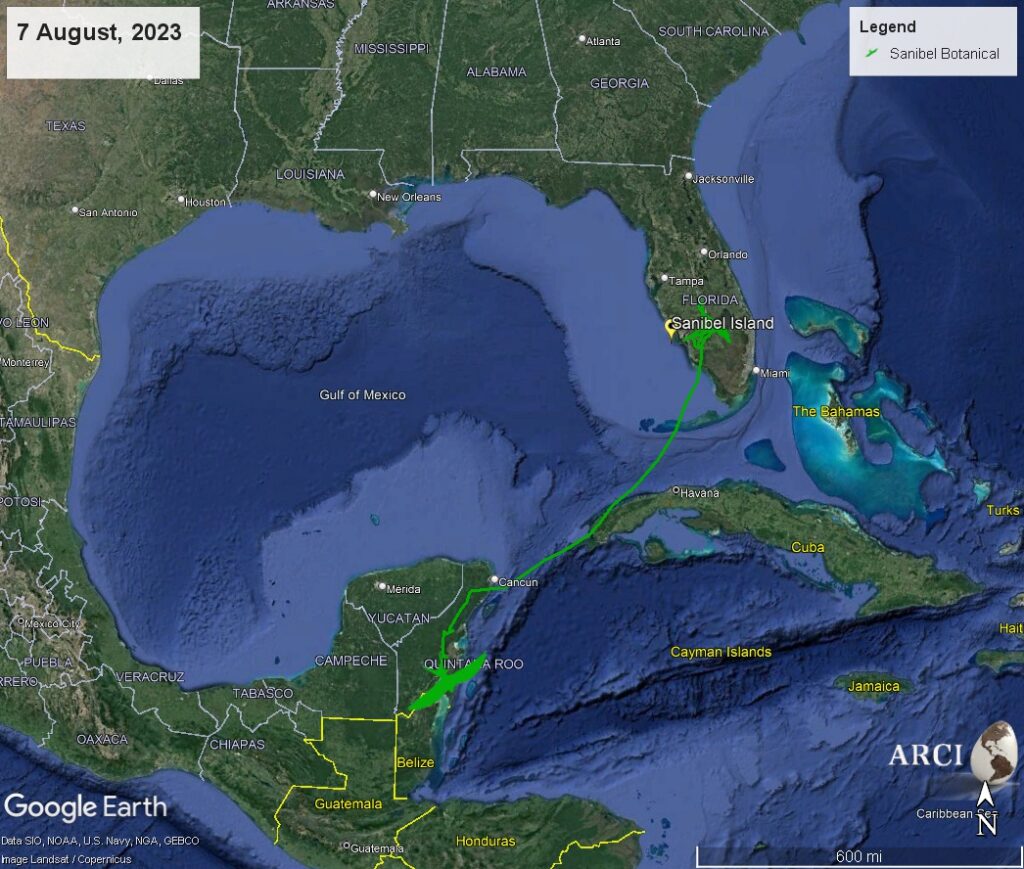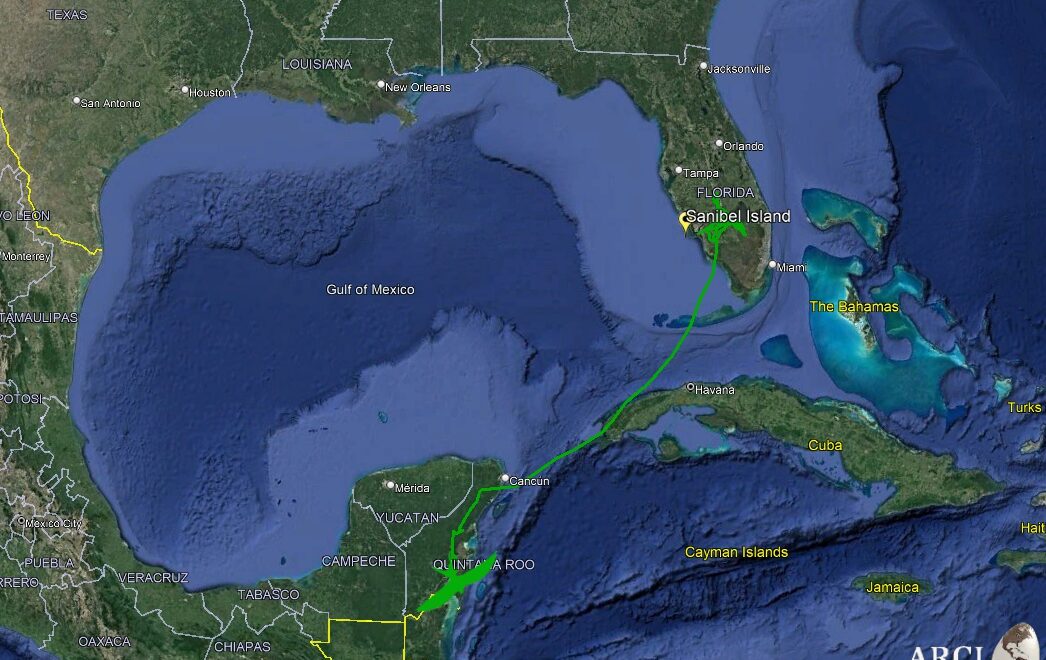ARCI has been tracking two GPS-GSM-tagged adult Swallow-tailed Kites from Sanibel Island since 2021 (see their intro blog). After the kites departed for their winter grounds in 2022, Hurricane Ian dramatically changed the Sanibel landscape. Nest trees were stripped of vegetation or sometimes completely removed. Also gone were fresh water, Spanish Moss for nest building, and much of the kites’ insect and invertebrate food sources. Despite these drastic changes, Swallow-tailed Kites returned to the island and started nesting.

GPS-tagged Swallow-tailed Kite, Bailey’s Homestead flying over Sanibel Island, FL. Photo by Veronica Runge.
With our partners in the Sanibel-Captiva Conservation Foundation, City of Sanibel’s Natural Resources Department, and reliable volunteers, we have found and monitored kite nesting activity on the island once again. In 2023 we recorded the highest number of nest attempts since we started monitoring on Sanibel, but nest success was the lowest we had ever seen. Kites nest in Australian Pine (Casuarina equisetifolia) on Sanibel as these are the only tall, suitable nest trees. After the hurricane, most of these trees had little to no needles remaining for structure and cover leaving the kites exposed to predators, heat, and wind.
The two GPS-GSM-tagged adult Swallow-tailed Kites were two of those nest attempts. Female kite, Sanibel Botanical’s nest failed early perhaps due to a pair of Bald Eagles attempting to build a nest in the same tree. She relocated to another island 5 miles away and began nesting again (uncommon for Swallow-tailed Kites to re-nest) and unfortunately, that nest also failed.
Bailey’s Homestead, a male, had one of the few successful nests in 2023. He is still on Sanibel Island preparing for migration before making the Gulf of Mexico crossing on his way to Mexico.
On 27 July 2023, Sanibel Botanical started south, leaving coastal Florida just east of Marco Island. She flew southwest passed the Marquesas Keys to western Cuba, arriving in the middle of the night only to sleep for a few hours until the thermals rose again on the morning of 28 July, making for an easy over water crossing from the Guanahacabibes Peninsula to the forests southwest of Cancun, Mexico.

ARCI is grateful to all the organizations, individuals, donors, and volunteers who made it possible to continue our long-term research to understand the ecology and conservation needs of Swallow-tailed Kites.


I am so amazed by these birds. We watched ours all summer here in Ocala, but can’t find them now so I guess they too are winging it southward. I miss them!!
Totally love this site and this species❤️